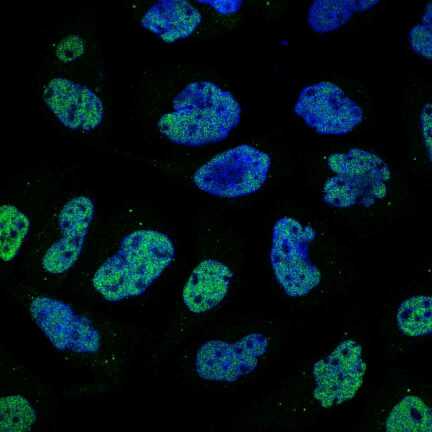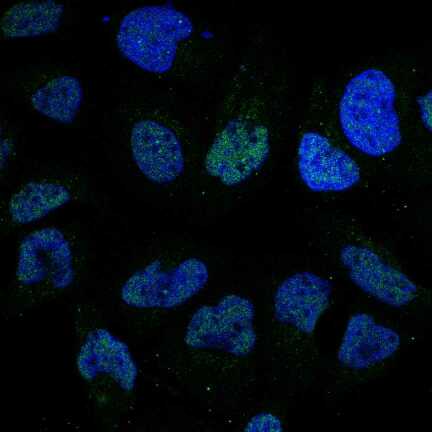Python implementation of FALCON: Feedback Adaptive Loop for Content-Based Retrieval
Project description






halcon (falcon in Spanish) is a python implementation of the Feedback Adaptive Loop for Content-Based Retrieval (FALCON) algorithm as described in
Leejay Wu, Christos Faloutsos, Katia P. Sycara, and Terry R. Payne. 2000. FALCON: Feedback Adaptive Loop for Content-Based Retrieval. In Proceedings of the 26th International Conference on Very Large Data Bases (VLDB ‘00), Amr El Abbadi, Michael L. Brodie, Sharma Chakravarthy, Umeshwar Dayal, Nabil Kamel, Gunter Schlageter, and Kyu-Young Whang (Eds.). Morgan Kaufmann Publishers Inc., San Francisco, CA, USA, 297-306.
FALCON is, as described in the article abstract, “a novel method that is designed to handle disjunctive queries within metric spaces. The user provides weights for positive examples; our system ‘learns’ the implied concept and returns similar objects.”
Development branch status

Master branch status

Pre-Requisites
numpy
scipy
To install the prerequisites in Ubuntu
sudo apt-get install update sudo apt-get install python-numpy python-scipy sudo easy_install pip sudo pip install mpmath
Installation
There are several ways to install halcon. The most common way is to download the source code, unzip/untar the source code package and run the command
sudo python setup.py install
I have plans of submitting this package to the Python Package Index. If I do so, then should be able to install it by running the command
sudo pip install halcon
COMMENT: halcon depends on numpy and scipy. Installing these packages in Windows and MacOSX is not a trivial task. For more information refer to the documentation.
If you wish to install halcon in a virtual enviroment from source code, then you can do
virtualenv halcon cd falcon source ./bin/activate pip install numpy pip install scipy pip install npmath mkdir src cd src git clone git@github.com:icaoberg/falcon.git cd falcon python setup.py install cd ../../ deactivate
If you wish to install halcon in a virtual enviroment from [PyPI](https://pypi.python.org/pypi/halcon), then you can do
virtualenv halcon cd falcon source ./bin/activate pip install numpy pip install scipy pip install npmath pip install halcon deactivate
COMMENT: The previous snippet assumes that you have virtualenv installed in your working system.
Usage
There is only one method that you need to know about
halcon.search.query(good_set, candidates, alpha=-5,
metric='euclidean', normalization='zscore', debug=False)
Here is a brief description of each of the input arguments
good_set and candidates are two lists of lists where each member of both lists has the same shape.
record = [<identifier>, <initial_score>, <feature_vector>]
For example in wine.py, I download a CSV file where the first feature_vector looks like this
[1,14.23,1.71,2.43,15.6,127,2.8,3.06,.28,2.29,5.64,1.04,3.92,1065]
and then I modify it like this
good_set = [] identifier = 'wine00' initial_score = 1 feature_vector = [1,14.23,1.71,2.43,15.6,127,2.8,3.06,.28,2.29,5.64,1.04,3.92,1065] good_set.append([identifier, initial_score, feature_vector])
For more information about the definition of the initial score, please refer to the article. In all my examples I use a initial score of 1, that is, all images have the same weight. The identifier should be unique (though not enforced), so you can tell images apart. This package assumes every object is represented by a feature vector. Feature calculation goes beyond the scope of this package. There are many feature calculation/machine learning packages out there that you might find useful, like OpenCV, mahotas and SLIC.
alpha. For more information about alpha, please refer to the article. The recommended value by the paper is -5, which is the default value used in this package.
metric. In the research article, a measure of distance d is used to calculate the distance between two feature vectors. The default value is euclidean (Euclidean distance) and other supported metrics are cityblock (Manhattan distance) and hamming (Hamming distance).
normalization. Feature normalization option. Default is zscore. Alternative option is standard.
debug. If debug flag is on, then it should print more information about the calculation as they happen.
Examples
For convenience and testing I included some examples. These examples download some datasets from the web and use them to trigger a query. The only exception is the random feature vectors example. For example, to run the iris example simply run in terminal
python examples/iris.py
The examples have a dependency that the package does not, since I use tabulate to pretty print the results from the examples.
In my humble opinion, the best way to run the examples is using virtualenv -which is what I do for travis-. The next commands assume you have virtualenv available.
virtualenv halcon --system-site-packages . ./halcon/bin/activate cd halcon mkdir src cd src pip install numpy pip install scipy pip install tabulate git clone https://github.com/icaoberg/halcon.git cd halcon python setup.py install cd .. python examples/iris.py
iris.py
$ python examples/iris.py
This example uses the iris dataset from
Machine Learning Repository
Center for Machine Learning and Intelligent Systems
http://archive.ics.uci.edu/ml/datasets/Iris
I will use the first feature vector as my query image
[[0, 1, array([ 5.1, 3.5, 1.4, 0.2, 1. ])]]
And I will use the rest of the feature vectors to find the most similar images
Now notice that feature vector with iid1 has the same values iid0
[1, 1, array([ 5.1, 3.5, 1.4, 0.2, 1. ])]
So I expect that if halcon is working correctly, then iid1 should be the top hit!
Elapsed time: 0.0221660137177 seconds
Ranking Identifier Class Score
--------- ------------ --------------- -----------
0 1 Iris-setosa 0
1 28 Iris-setosa 1.27788e-43
2 5 Iris-setosa 2.40121e-40
3 29 Iris-setosa 2.40121e-40
4 40 Iris-setosa 5.83391e-40
5 8 Iris-setosa 7.04398e-39
6 18 Iris-setosa 1.1259e-35
7 41 Iris-setosa 1.51906e-34
8 50 Iris-versicolor 6.99696e-34
9 37 Iris-setosa 1.09221e-32
10 12 Iris-setosa 1.22203e-32
11 49 Iris-setosa 2.05046e-32
12 11 Iris-setosa 4.25801e-31
13 21 Iris-setosa 6.55842e-31
14 47 Iris-setosa 5.54098e-29
15 36 Iris-setosa 7.93943e-29
16 7 Iris-setosa 2.16985e-28
17 20 Iris-setosa 4.23544e-28
18 25 Iris-setosa 1.67453e-27
19 3 Iris-setosa 2.40919e-27
Do the top results in the list above belong to the same class as the query image?
If so, then SCORE! It seems to work.
wine.py
$ python examples/wine.py
This example uses the wine dataset from
Machine Learning Repository
Center for Machine Learning and Intelligent Systems
http://archive.ics.uci.edu/ml/datasets/Wine
I will use the first three feature vectors as my query wine set
And I will use the rest of the feature vectors to find the most similar images
Elapsed time: 0.0280928611755 seconds
Ranking Identifier Score
--------- ------------ -----------
0 wine1 0
1 wine2 0
2 wine3 0
3 wine21 2.77663e-05
4 wine30 0.000629879
5 wine23 0.00252617
6 wine49 0.00318536
7 wine57 0.00456123
8 wine36 0.0152067
9 wine39 0.0197516
10 wine58 0.0243848
11 wine9 0.024467
12 wine55 0.045762
13 wine24 0.046893
14 wine7 0.113906
15 wine45 0.188355
16 wine27 0.201802
17 wine41 0.206469
18 wine31 0.288536
19 wine56 0.291853
human_protein_atlas.ipynb
I have included a Jupyter notebook that shows an example using Subcellular Location Features on some images from the Human Protein Atlas.
Using the query image

we queried the content database and determined the most similar image is

Do you think they look similar?
Documentation
Documentation was written using Sphinx. To generate documentation use the following commands.
To generate html
cd docs make html
To generate PDF document
cd docs make latexpdf
To generate epub document
cd docs make epub
Bugs and Questions
To submit bugs about the source code visit
To submit bugs about the documentation visit
For any other inquiries visit those links as well.
Project details
Download files
Download the file for your platform. If you're not sure which to choose, learn more about installing packages.
Source Distribution
File details
Details for the file halcon-0.0.21.tar.gz.
File metadata
- Download URL: halcon-0.0.21.tar.gz
- Upload date:
- Size: 27.1 kB
- Tags: Source
- Uploaded using Trusted Publishing? No
File hashes
| Algorithm | Hash digest | |
|---|---|---|
| SHA256 |
466f12f35eea1eaec988f3d7832fe0a339fc696352f0283241a839b7f840982d
|
|
| MD5 |
1bf4776efcacf329cfc8aa1bb797b55e
|
|
| BLAKE2b-256 |
3ce6dcb44a03a6ca69e8c9010790d6215f57b8f8982ed3e75a9696a5f75a0e22
|










